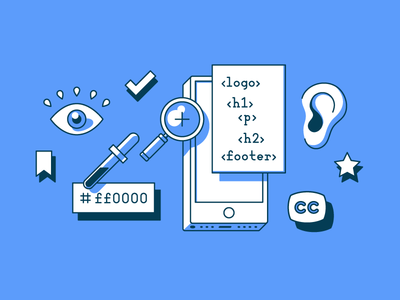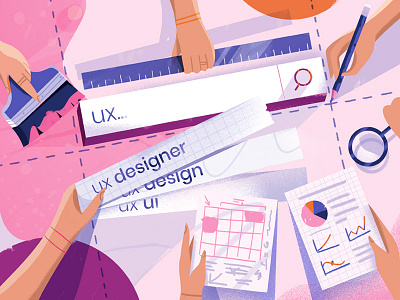Whether you’re a veteran user experience (UX) designer or just getting your feet wet, having the necessary resources at your disposal is critical for success. Freelance professionals need additional special skill sets and tools compared to those who are working on-site.
The relationship between soft skills and tools go hand in hand. There is an overwhelming amount of technology available on the market, and it can be hard to identify what can not only help you land a job, but to delight and build long-lasting relationships with clients. Therefore, it is crucial to identify the areas that today’s dynamic designers must focus on to find solutions and understand the user. More than ever, users need a digital experience that is both practical and inspirational. In order to do so, focus on some fundamental areas for freelance UX designers and the tools that satisfy the needs of these five categories.
1. Showcase Your Abilities With a Portfolio Builder
Getting started and building your reputation begins with creating a strong UX portfolio. Potential clients may hesitate to hire you without a solid body of knowledge and work experience. Take the time to showcase your best product design and special talents that give you an edge above your competitors. A wide range of materials can speak volumes about your character and aptitude.
If you don’t know where to start, there are some great UX portfolio builders that can compile prototypes, case studies, and products that demonstrate your critical thinking, research, and decision-making process throughout the project lifecycle.
It’s also a good idea to use a tool like Bonsai to help manage your projects. From there you can plan projects, track tasks, and manage your time efficiently—all from one platform.
2. Introduce Yourself With a Community Platform for Designers
As a freelance professional, it can be especially beneficial to join a community for designers and creatives. Such platforms allow you to engage in valuable conversations with other industry experts and build potential business networks. Designers can share inspirational web designs, product designs, as well as branding and illustration examples.
When working from home, you can more easily fall into a rut, however, the community can help to foster essential collaboration or even serve as an avenue to expand and join a freelance design team. Community platforms can also help you to launch and promote your work. There are often freelance job boards that provide opportunities to work for prestigious clients that can offer challenging projects to help you grow.
3. Take Steps to Build Trust With Clients Using Security
As a freelance UX designer, establishing and building trustworthy relationships is critical. If you want clients to be confident in your abilities you must take special care to demonstrate the steps you are taking to put them first.
For instance, you need to work with extensive data sets that come with identifying problems and testing possible solutions. This process involves collecting and analyzing sensitive user and corporate data. By using various identity and access management (IAM) solutions, such as single sign-on or multi-factor authentication, you can monitor and secure client information while working from anywhere. IAM ensures that only the appropriate individuals working on the project can access the sensitive information and resources needed.
4. Be Conscious of Diversity With Accessibility Tools
Being conscious of diversity and inclusion while solving problems and designing products is a must for UX designers. Users are unique individuals, and each one has a different perspective when navigating a site or app. It’s especially important to walk in the shoes of your users to understand their needs. Products need to be designed with accessibility in mind to help those who need additional accommodations in order to fully enjoy the user experience. There are many accessibility tools for UX design available to help you ensure you are taking the appropriate steps when putting together products.
5. Help Bring Your Client’s Vision To Life With Wireframes
Clients often want to be able to envision the final product. Now especially, design trends for apps and the mobile experience will be at the forefront of many clients minds for 2020 and beyond.
In order to best plan out your design, there are many versatile wireframe tools available. Wireframes act as your blueprint, and elements and content can be arranged within the software to help you determine what would work best for the end-user. It also gives the client a better understanding of what makes the best UX design for the desired outcome. Clients may be able to better articulate what they are expecting from you when being able to envision products through wireframes.
Having an understanding of UX focus areas and tools will be incredibly beneficial for career growth. The future of work points to remote and freelance environments, and this has been accelerated due to current events. In fact, two million Americans have turned to freelance work alone in the past twelve months. So, even if you’re not freelancing or working remotely at this time, doing your research and getting prepared now will serve you well in your career down the road.
Freelancing brings its own challenges, which is why you should use a tool like Bonsai. From proposals and contracts, task and project management, to invoices and taxes, you can manage your whole freelance business from their user-friendly platform.
Take time to invest in yourself and stay up to date on the latest trends and tools that will help propel you and your career forward ■
Find more Process stories on our blog Courtside. Have a suggestion? Contact stories@dribbble.com.













